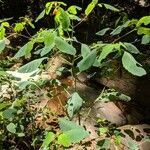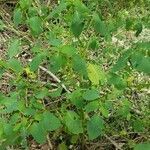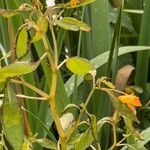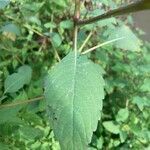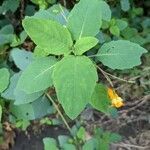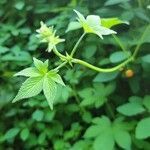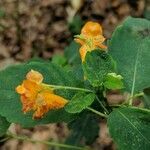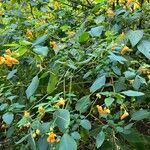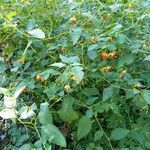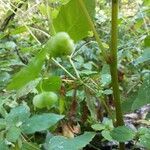An annual herb. It grows 50-100 cm high. The leaves are alternate and simple. They are thin and oval and have coarse teeth. They are 2-10 cm long. The flowers are reddish-orange or yellow. They have purple spots. The flowers are about 2 cm long. They have 2 small greenish sepals and 1 orange sepal forming a pouch with a long spur. The fruit is a green pod. It splits open along 5 valves when mature. This pod splits open suddenly when touched.
